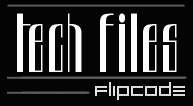 |
03/28/2000, Introduction & Programming Issues
|

Hello!
My name is Muresan Robert and i am a first year student at a Computer
Science University in Romania (Babes-Bolyai University).
My favourite hobby is programming. It all started 5 years ago when I
decided to attend at a Computer Science High School. My programming knowledge
back then was 0. I learned Pascal in one year then i wrote 2 First Person
shooters, using Pascal and with almost no documentation (I haven't heard
about Flipcode then, Internet in my country was like a having a Ferrari).
After that i learned a lot of languages such as Basic, Assembler, Delphi,
Visual Basic, etc. I saw that writing 3D graphics in Pascal was no good, I
learned C, C++ and after that OpenGL, so now i can write pretty good 3D
graphics.
My Project

Currently i have started developing a 3D game engine mostly for research.
It is based on OpenGL and it's written in Visual C++ 5.0. My main goal
is to achieve a good scalability and portability in my engine. I want to
make it very easy to modify and port to other platforms. You will hear more
about it as will talk in my .tech file about it, when i will cover some features.
Enough with the introduction, so let's start some tech file subjects:
How To Write Portable & Easy To Understand Code

Since i want my 3D engine to be portable and easy to modify, I have came up
with some tricks to achieve that. It may not be the best but it is OK for
me. Let's take a look:
We create an abstract interface to all we need in our engine, and put it
in a separate folder(I learned some from the Quake sources :))
Video interface
os_windows\video.h and create our functions
int Init_Device()
void Close_Device()
void Render_Triangle()
void Set_fog()
etc...
|
We even can achieve very easy API portability (use Direct3D instead of OpenGL, or
anything else)
Audio interface
os_windows\audio.h and create the functions
void Init_Device()
etc...
|
And we will write an interface for everything: Input, Network, File management.
After having done with this headers we start writing our 3D engine, in pure
C or C++ language and the only function we will call will be those in the
OS folder.
That's nothing new (you will say), but here comes the fun part:
Create a os_null folder and copy all your headers their but leave the
function empty. For example:
-os_null\video.h
int Init_Device();
-os_null\video.c
int Init_Device()
{
// do nothing
return 0;
}
|
And since our engine is written in pure C and the only functions called, are
those in the headers contained in the os_something folder, by including the ones
in os_null you will be able to recompile your engine under any platform.After
that all you have to rewrite are the function in the headers. Pretty easy isn't
it?
A Very Simple Engine Arhitecture

I always wanted to make my engine simple, so that i can add new features
very easy. Here is how i am going to achieve this:
I define everything in my engine as an "entity" :
class something {
void Init();
void Update();
void Render()
}
|
how does this help me?
I want to add fog for example:
class fog{
void Init()
{
read_fog_parameters_from_level_file()
glEnable(GL_FOG);
//etc...
}
void Update()
{
//nothing
}
void Render()
{
// nothing
}
}
|
I can define the player as a class like this one, and i also can define
particle systems, monsters, bots, skydomes, everything. Each class will have it's
separate header wich i will only have to include and add these lines to my code:
#include "class\new_feature.h"
Init_Engine()
{
new_feature.Init();
}
Update_Engine()
{
new_feature.Update();
}
Render_Scene()
{
new_feature.Render();
}
|
Well that's it for the moment. Next time i would like to talk about a thing
that is bugging me for some while: Details in game when look very close to a
wall for example, and how to improve it.
If you have any questions you can email me at my new address: muresan@fcmail.com


06/26/2001 - Tech File Update
06/19/2000 - Back Again...
04/20/2000 - Detail And Hardware
03/28/2000 - Introduction & Programming Issues
This document may not be reproduced in any way without
explicit permission from the author and flipCode. All Rights Reserved.
Best viewed at a high resolution.
The views expressed in this document are the views of the author and NOT neccesarily of anyone
else associated with flipCode.
|







